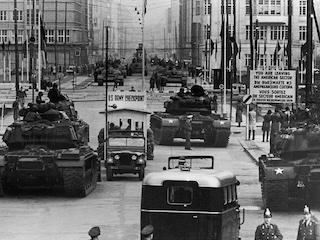CIENS is organising a seminar on 8 April on the role of Live Oak during the Second Berlin Crisis.
Triggered a few months earlier by Khrushchev, who wanted to get rid of the Allied military presence in the western sectors of Berlin, the crisis continued until 1963.
Live Oak, set up in April 1959, was made up of officers from the three Western powers that guaranteed the status of the Berlin enclave: the United States, France and the United Kingdom.
Its purpose was to plan crisis scenarios, military measures to maintain or re-establish access to West Berlin, and other political and economic retaliatory measures in the event of a new blockade by the USSR.
The question of the role of nuclear deterrence arises immediately, because the West Berlin enclave and access to it cannot be defended by purely conventional military means, given the imbalance of forces at this level in the European theatre.
The purpose of looking back at the creation and operation of this planning group is to launch a collective study of the little-documented history of Live Oak, which continued to exist until the end of the Cold War. The aim is to produce a truly multilateral approach to the emergency planning that took place in this very specific body.
On 8 April, students will attend a research workshop with five researchers and take part in question-and-answer sessions. Frédéric Gloriant, Director of CIENS, is coordinating this seminar with Yannick Pincé, associate researcher, contemporary historian and specialist in French nuclear history.

